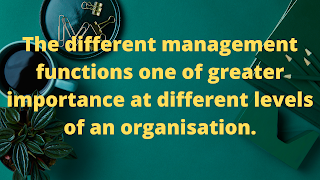The following safety measures are taken during civil engineering construction. (i) Suitable scaffolds should be provided for workmen. (ii) When ladder are used, it should be provided with foot holds and hand holds and inclination of one is to four (1 horizontal : 4 vertical) be provided. (iii) The scaffolding should be properly supported and shall have a guard rail property attached to it. (iv) Every opening in floor of a building should be provided with suitable means to prevent the fall of persons or materials. (v) Fencing and lights shall be provided to protect the public from accident. (vi) The excavated material shall not be placed within 1.5m of the edge of the trench or half the depth whichever is more to avoid collapse of sides due to surcharge. (vii) No undermining or undercutting shall be allowed. (viii) All roads and open areas adjacent to any side where demolition is to be carried out, must be closed or suitably protected. (ix) No electrical cable etc. shall remain electric...
The different management functions one of greater importance at different levels of an organisation.
According to Koontz and O,Donnell, classification of management is as follows:
(i) Planning
(ii) Organising
(iii) Staffing
(iv) Directing
(v) Controlling
These functions are so interwovened that in actual practice, it is not possible to separate them from one another. The importance of these functions are listed below:
(i) PLANNING: Planning involves deciding in advance what to do, when to do it, where to do it, how to do it and who has to do it. It implies determination of the objectives to be achieved and selecting the right course of action to achieve the desired objectives. The process of planning consists of the following steps:
(a) Establishing objectives
(b) Making forecasts
(c) Formulating policies, procedures and rules,
(d) Drawing programmes, schedules, budgets etc.
(ii) ORGANISING: To organise business means to provide it with everything useful to its functioning - raw materials, tools, capital and personnel. Process of organising involves the following steps:
(a) Identifying the activities necessary to achieve the objectives.
(b) Grouping similar activities to managable units.
(c) Assigning duties or tasks to appropriate individuals.
(d) Delegating necessary authority to individuals and fixing responsibilities for results.
(e) Defining authority - responsibility relationship among individuals.
(iii) STAFFING: It is basically concerned with human resources. Its aim is to fit individuals and jobs i.e. the right man for the right job. The board of directors perform staffing of chief executives, who in turn perform this in relation to departmental managers. The departmental heads train and appraise supervisory personnel, who in turn are associated in the selection and training of the workers.
(iv) DIRECTING: A manager may plan and organise, but no tangible results can be achieved until the plan is implemented. This is done by directing, which means moving into action. The directing function involves continuous interaction between manager and his subordinates.
Directing functions are as follows:
(a) Issuing instructions and guidelines to the subordinates.
(b) Influencing and supervising the subordinates.
(c) Advising, coaching and councelling subordinates to work in the desirable manner.
(d) Communicating with people to create mutual understanding and team work.
(v) CONTROLLING: Controlling means process of ensuring activities of subordinates and using resources in conformity with the predetermined objectives and targets. It involves observing what is being done, how well it is being done, to what extent it deviates from the desired results and thereafter taking corrective measures.

Comments
Post a Comment
Kindly let me know, if you want to know anything.